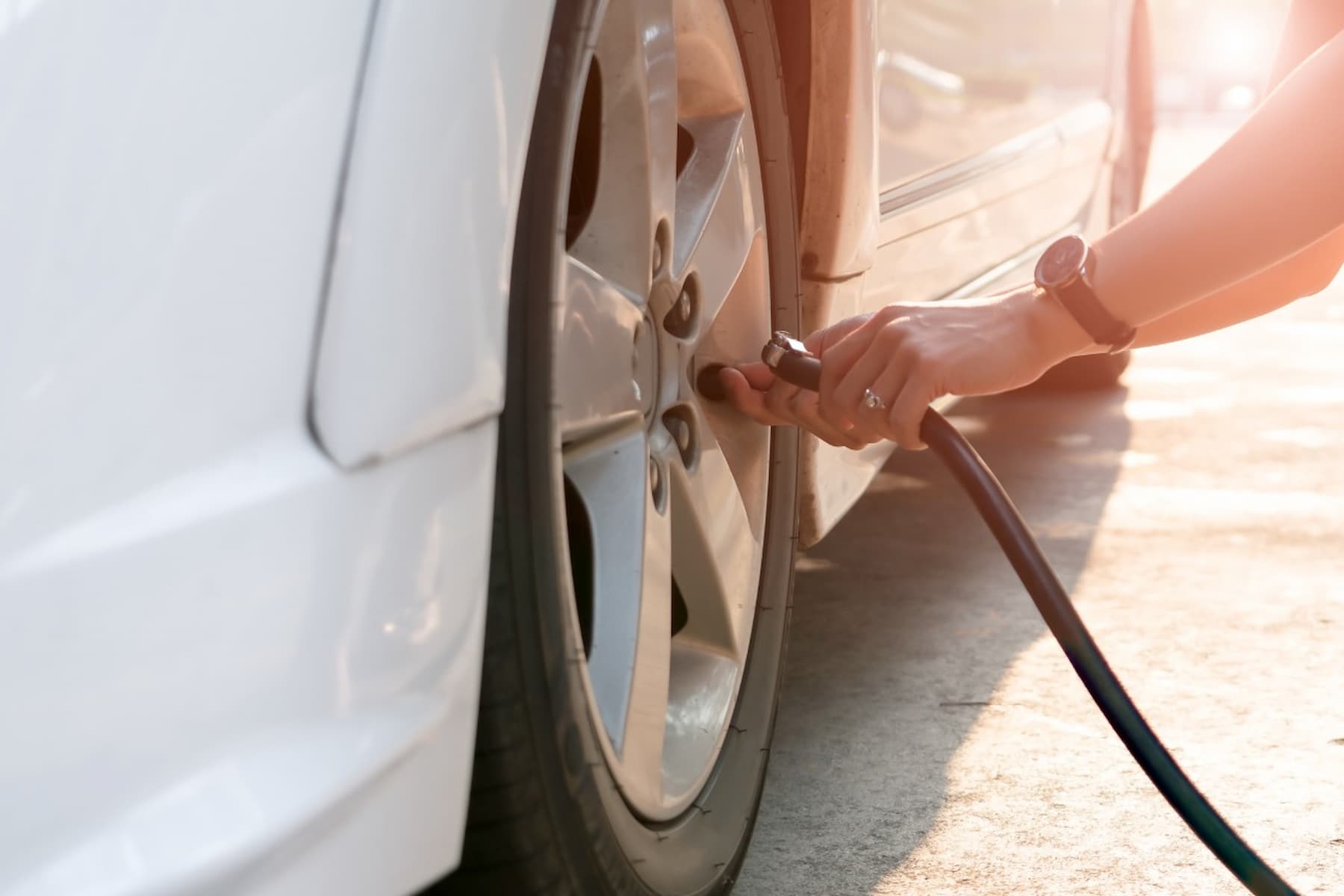By Paddy Comyn | April 2024

By Paddy Comyn | April 2024
We all lead busy lives and amidst the mental and physical checklists of to-dos, we try and get through each day, checking the tyre pressure on our car might not be high up on our priorities. But should it be? Well, the short answer is yes - here is why.
1. It needs topping up more often than you think
Many people think once their tyres have been filled with air, then unless they have a puncture they do not need to think about it again. How often should you check your tyre pressures? Once a month, and you should always do this when the tyres are cold. Cold tyres, i.e. one that hasn’t been driven on recently, will give a more accurate reading than one that is warm.
Top tip: Set a recurring reminder on your phone to do it once a month so you don’t forget.
2. It isn't that hard to do
You can buy a tyre pressure gauge or tyre pump for home use inexpensively, but you don’t need to do this if you just go down to your local filling station where most have decent pumps with built-in pressure gauges.
The first thing you need to do is establish what the right tyre pressure is for your tyre. As long as the car is still on the wheels it came with from the factory, you should be able to find out what the pressure required is by checking inside the door of the car, where it is often marked down, with different pressures depending on how many people you have in the car. For example, if you were going on holiday with the entire family and a whole lot of luggage you would need more air in the tyres than if you were driving on your own. If you commute in the car most of the time on your own, which many of us do, select the one which represents 1-2 people or pick the illustration which most accurately represents your driving situation.
You might see two different units of measurement used, PSI (pounds per square inch) and bar. 1 PSI is equal to about 0.0689 bar, so if your car's tyre pressure is 32 PSI, it would be around 2.206 bar. Most cars will tell you both numbers and a switch on the tyre pump will usually switch between the two units. Set the pressure you require, pay the fee, which is usually around €1 or so, and then unscrew the dust cap from the valve and place and hold the pump onto the valve and this should activate the unit. You will hear a gentle whoosh of air entering the tyre and most units will stop when you reach the desired pressure, indicated by a beep. Repeat for any other tyres in the car.
If your tyres were for some reason, overinflated, these machines will let out air out of the tyre until the right pressure is reached. In some cases, you might need to reset the tyre pressure monitoring system on your car if one is fitted.
3. It can save you money
You might wonder, what is the point of bothering to check your tyre pressure so much? Why do some tyres deflate faster than others? Tyres exposed to the sun lose air faster than those that are not, so it could be as simple as where your car is parked most days.
If the valve of your tyres is a little porous, you could end up losing air faster than normal. It is normal for variances between wheels so don’t worry about this too much unless you find you are constantly topping up one wheel more than others, which might indicate a slow puncture.
Did you know that when it comes to fuel economy or electric vehicle range, the right tyre pressure can have an effect? If your tyres are underinflated, for example, there is more of the tyre in contact with the road. This friction between the tyre and the road is called rolling resistance and as rolling resistance increases, so does the amount of force that the engine (or electric motor in the case of an EV) needs to generate to keep the vehicle moving. A tyre with 25% of the air let out of it may still look like a fully inflated tyre, so you can’t always trust a visual inspection.
A study by the National Highway Traffic Safety Administration (NHTSA) in the USA found that every 1% decrease in tyre pressure correlated to a 0.32% reduction in fuel economy, so a 20% underinflation increases fuel consumption by 4%. The same organisation estimates that 60 per cent of light vehicle tyres are underinflated and that 30- to 40- per cent are underinflated by 4 PSI or more. Have an EV? The same applies here. If you are underinflated you will get less range.
4. You are putting your safety at risk
This is perhaps more serious. When you drive on underinflated tyres, you are not just being a little negligent, you are potentially putting yourself and your occupants at risk. As we have mentioned when you have an underinflated tyre, you have more surface area touching the road, which increases the friction and then this in turn can lead to overheating. This will cause your tyres to wear faster, the treads can separate and you are at greater risk of a blowout. A change in the footprint of the tyre can also lead to changes in braking distances. Strangely enough, underinflated tyres can offer shorter braking distances, but offer less stability, so make sure they are correct.
Information correct as of date of publishing. This blog will not be updated or edited so the information may become outdated.